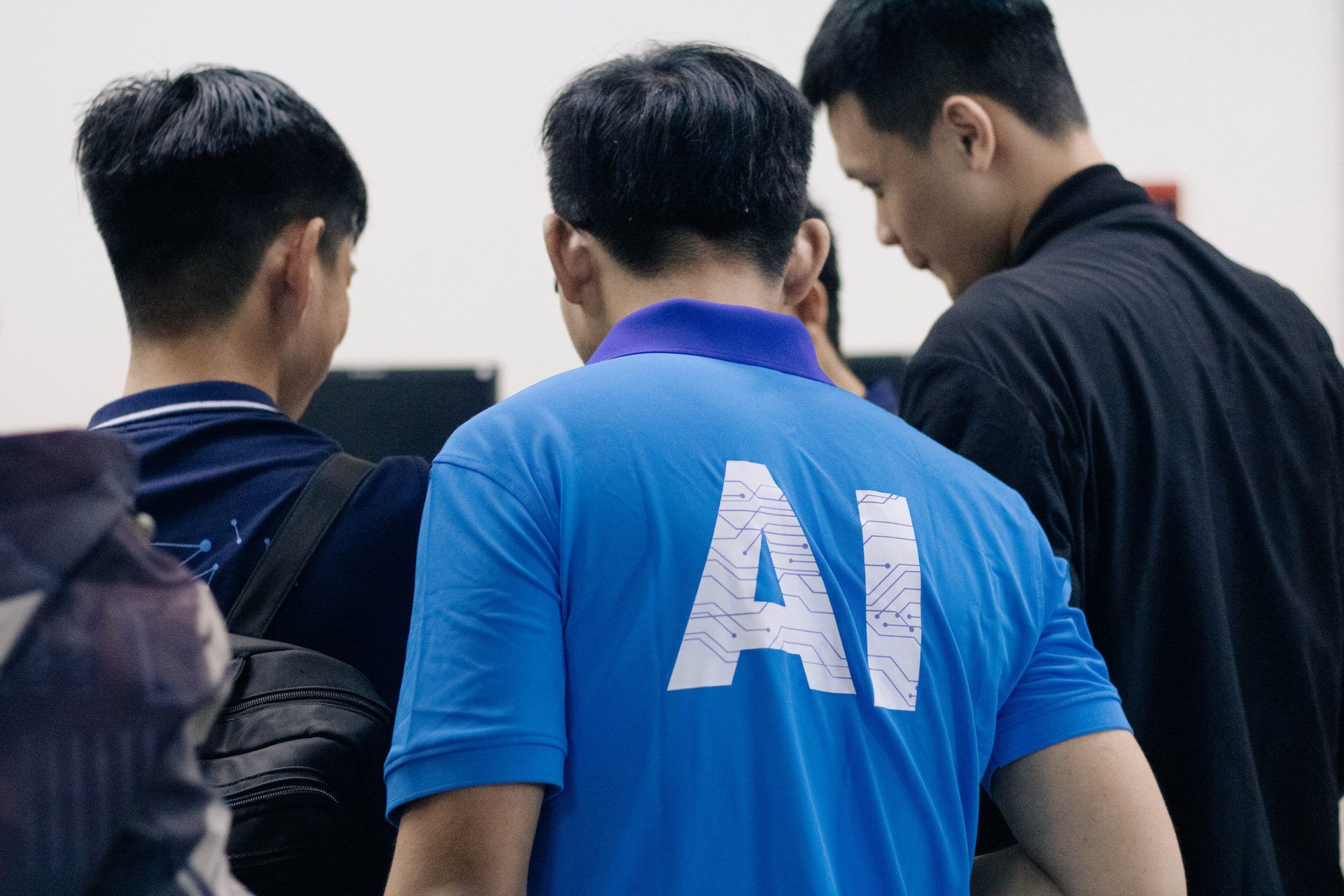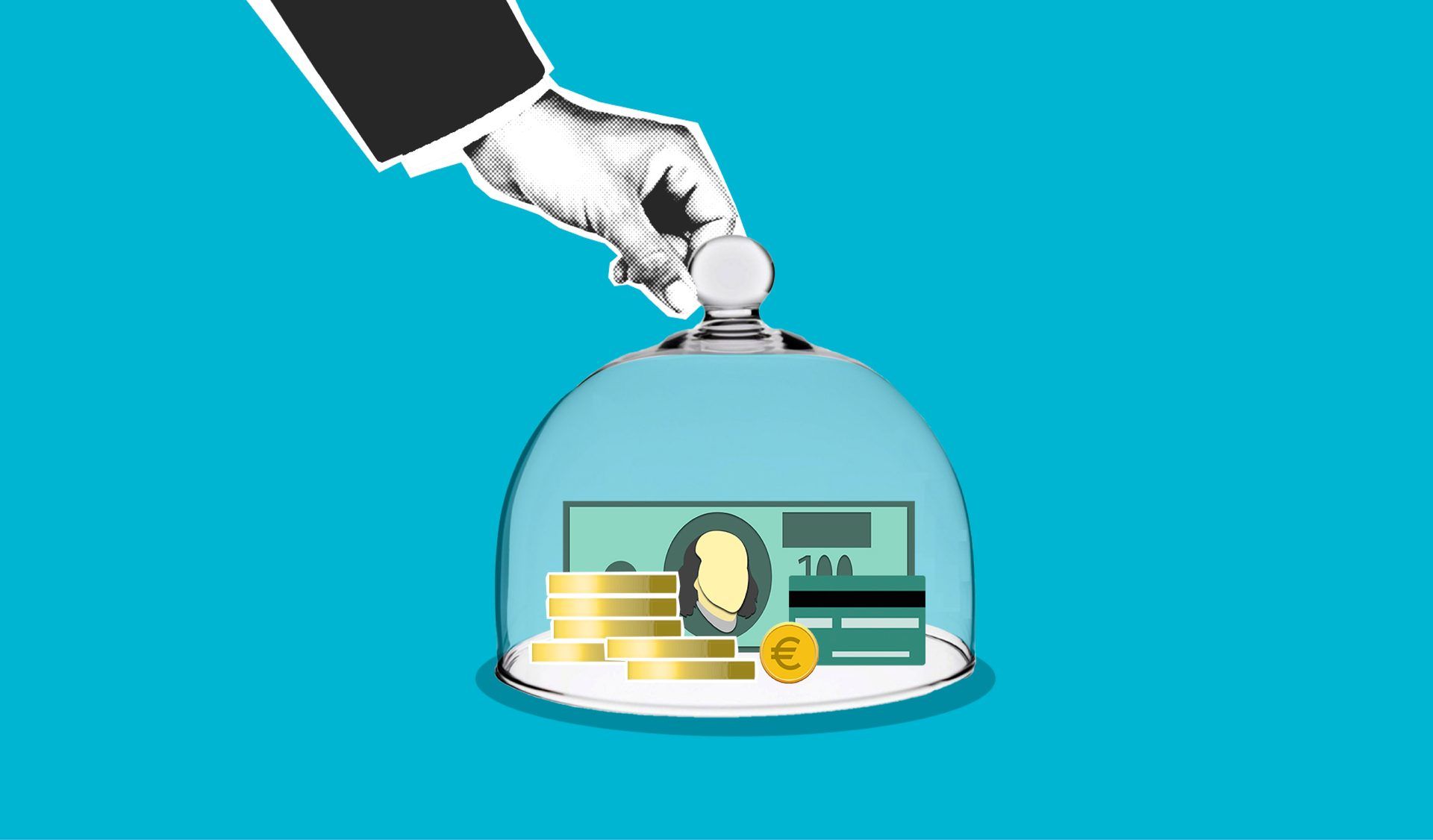How Is Artificial Intelligence Used In Business
What is the impact of artificial intelligence in insurance? Well, there are a lot of use cases forartificial intelligence in everyday life, but what nearly AI in insurance? The effects of bogus intelligence in business heavily include insurance.
Are you lot scared of AI jargon? We accept already created a detailed AI glossary for the most commonly used artificial intelligence terms and explained the basics of artificial intelligence every bit well equally the risks and benefits of artificial intelligence for organizations and others. So, it's time to explore the role of artificial intelligence in insurance sector.
Touch on of artificial intelligence in insurance industry
1 of the almost revolutionary advances has been the use of AI in insurance, which has been hailed as having meaning economic and societal advantages that eventually boost risk pooling and improve hazard reduction, mitigation, and prevention.
Automation enables insurance businesses to quickly respond to requests and guarantee that the customers they pledge to serve will receive high-quality service.

"Machines have instructions; we have a purpose. We will need intelligent machines to help us turn our grandest dreams into reality."
Garry Kasparov
Is Kasparov right? Absolutely. All the same, the insurance industry has not adapted to AI technologies despite their many benefits. The traditional insurance industry has more often than not been hesitant to adapt to new technologies. According to a Deloitte survey, while practically every business has institute success with AI or has begun investing in it, the insurance sector appears to be far behind, with but 1.33% of insurance companies investing in AI compared to 32% in software and internet technologies.
The good news is that whoever adopts AI early in the insurance sector will exist a pioneer and receive the largest slice of the pie.
The surround is currently evolving quickly with the emergence of InsureTech startups and technological incumbents. In addition to requiring less money and resource, they tin can provide on-need plans, more transparent pricing, and quicker claim payments.
What is the InsurTech industry?
The term "InsurTech " describes technical advancements developed and used to increase the effectiveness of the insurance sector. The invention, distribution, and direction of the insurance industry are all supported by InsurTech.
The shifting dynamics create global prospects for the AI-enabled insurance sector. So, allow'southward encounter the benefits of artificial intelligence in insurance and explore the gustation of "the pie."
Benefits of bogus intelligence in insurance
These are some of the best benefits of artificial intelligence in insurance:
- Expanded data and insight access
- The correct data at the right moment to the right people
- Consistent functioning from employees
- Improve, quicker decisions are driven by data
Let'southward take a closer await at the advantages of artificial intelligence in insurance and discover out how Artificial intelligence is helping the underwriting procedure in insurance.

Expanded data and insight access
Building a ameliorate, more precise data foundation is a prerequisite for integrating AI into a workflow, and doing so benefits people even earlier AI is used.
Consider a worker attempting to ascertain whether some clients are spending too much time in the service center, particularly if they have a low estimated lifetime value. The underwriter receives a forecasted lifetime value score and tin employ it to inform a better cost decision thanks to access to customer journeying data and insights.
Afterward AI is implemented, whatever previous activities can be sent to the machine-learning model and the client's information. By targeting the most profitable customers and fugitive those who are most probable to be unprofitable, the sales and marketing teams can improve time to come results.
The correct information at the right moment to the right people
A submission forwarded to underwriting is beginning evaluated in existent-time using predictive models for criteria including "broker sincerity" and "projected loss ratio for this grade." To help with issues like "Which risk should I work on next that will be most advantageous for our visitor?" AI tin and then develop a scoring system for those inputs.
Given the insights provided, the underwriter tin choose the optimal course of activity by digitizing the underwriting procedure with AI. In this instance, AI aids in bridging the gap between the employee'due south action based on the recommendation made by the AI engine and the information gained.
Consistent performance from employees
Decisions become more than accurate, right, and consequent thanks to AI's elimination of a large portion of the guesswork involved in controlling.

While training is still essential, applying AI enables less experienced employees to pick up new skills much faster because they receive recommendations based on decisions that accept already been proven to be correct. This reduces a lot of the risk that comes with hiring a new employee.
Bank check outhow is artificial intelligence irresolute the recruiting process
An insurance claims adjuster with less expertise might overcompensate a client for a merits. In contrast, an adjuster empowered past AI tin can exist directed through suggested next actions based on prior experiences, all within the same analytics system.
Ameliorate, quicker decisions are driven by data
Call back virtually an insurance provider attempting to prevent fraud. Unlike humans, AI can read and depend on vast amounts of historical data based on false claims.
As a consequence, future fraud is defenseless considerably more than quickly and precisely. This also helps the AI swiftly enhance its grasp of typical fraud behaviors. Much more than a human counterpart could e'er calculate or act upon.
Because of these benefits, at that place are a lot of utilise cases of bogus intelligence in insurance.
Check out how big data is changing the insurance industry
AI in insurance use cases
AI is increasingly important in the insurance industry, from claims processing to compliance to risk reduction and damage analysis. These are some of the best AI in insurance use cases:
- Claims processing
- Claims fraud detection
- Claims arbitrament
- Automated underwriting
- Submission intake
- Pricing and take chances management
- Policy servicing
- Insurance distribution
- Production recommendation
- Property damage analysis
- Automatic inspections
- Client lifetime value prediction
- Speech analytics
- Customer segmentation
- Workstream balancing for agents
- Cocky-servicing for policy management
- Claim volume forecasting
How is technology changing the insurance industry? How does AI & ml enable insurers to tackle electric current challenges? Permit's explore bogus intelligence in insurance use cases and observe out!
Claims processing
In order to comply with policy and regulatory requirements, insurers must brand sure that claims are valid throughout the whole process bike.
Handling thousands of claims and client inquiries is a laborious chore that takes fourth dimension. The entire procedure is constructive and efficient, thanks to machine learning. Moving claims through the first report, assay, and contacting the consumers significantly increases the value chain of claims processes.
Bank check out the fifteenreal-life examples of motorcar learning
Employees could concentrate on more complicated claims and one-on-ane customer interactions considering of the time savings.
Claims fraud detection
Co-ordinate to research by the Federal Bureau of Investigation on U.s. insurance firms, the full cost of insurance fraud (non-wellness insurance) is near $twoscore billion annually.

In terms of higher premiums, insurance fraud costs the typical US household $400 to $700 annually. These shocking figures highlight the critical need for precise automatic theft detection solutions to enable insurance companies to ameliorate their due diligence procedure.
Claims adjudication
Co-ordinate to the Council for Affordable Quality (CAQH) Index research, automating eligibility and merits verification tin can save the healthcare insurance manufacture alone $ 5.2 billion annually. With a chatbot that communicates with consumers and gathers the necessary information, the claim initiation automation process helps insurers save time.
A offset-level validation tin exist done throughout the claim start process using chatbots to capture information in a structured mode. Co-ordinate to a Earth Economic Forum (WEF) report, computers will be used to carry out 62% of an organization'south data processing and storage tasks by 2022. Due to the expanding automation industry, investing in auto-adjudication systems will assist firms stay relevant shortly.
Automated underwriting
Do y'all know a ameliorate dearest story than AI in insurance underwriting? In the past, insurance underwriting relied mainly on employees to examine historical information and come to wise conclusions. Working with chaotic systems, procedures, and workflows was another claiming every bit they attempted to reduce risks and provide customer value. Intelligent process automation simplifies the underwriting process past offering Auto Learning algorithms that gather and make sense of enormous volumes of data. It is 1 of the nigh used artificial intelligence in insurance use cases.
Additionally, it enhances the performance of rules, controls direct-through credence (STA) rates, and guards against application mistakes. Underwriters can concentrate only on complex instances that may need manual attending as nigh of the process has been automatic.
Submission intake
When combined with AI and NLP, automation tin can extract data from structured and unstructured sources, including brokers' emails, spreadsheets, loss runs, and ACORD forms, facilitating effective teamwork and accelerating and improving risk cess.
Additionally, automation makes managing various submission queues for new businesses, renewals, and endorsements easier. Machine learning models rapidly sift through hundreds of submissions and rank the all-time entries following the underwriting triage criteria and gamble ambition.
Pricing and risk management
Price optimization uses data analytic techniques to make up one's mind an organization's ideal rates while considering its objectives. It is 1 of the all-time bogus intelligence in insurance use cases.

It analyzes how customers respond to various pricing strategies for goods and services. GLMs (Generalized Linear Models) are mostly used by insurance companies to optimize prices in industries similar auto and life insurance. With this method, insurance businesses may better empathize their clients, residue supply and demand, and increase conversion rates.
Automation of risk assessment besides improves operational efficiency. Take a chance assessment automation increases efficiency by fusing RPA with automobile learning and cerebral technologies to build intelligent operations. Insurance companies tin provide a ameliorate client experience and lower turnover because the automated procedure takes much less fourth dimension.
Bank check out cyber risk assessments examples
Policy servicing
The policy administration system tin be integrated to get information about each policy thanks to the automated intake of policy data. This lessens the manual search and location effort needed to notice the pertinent fields for policy endorsements.
Additionally, it enables parallel processing to handle complex circumstances where many requests are made by different clients, which reduces the turnaround fourth dimension for processing and servicing insurance policies. RPA in the insurance industry helps to efficiently complete various tasks without requiring extensive system navigation. It automates administrative and transactional tasks like accounting, settlements, risk capture, credit command, revenue enhancement preparation, and regulatory compliance.
Insurance distribution
In the pre-digital era, insurance customers might visit a local carrier or contact a financial adviser to larn about coverage possibilities. In a specialized market, there would often be a leading carrier for a sure production. The carrier would carry out underwriting tasks and share a quote based on the customer's submitted information. Digitalized insurance distribution methods flipped this scenario.
Today, near all carriers have an online site where customers may browse their selection of products and services before making a option. This change in consumer behavior brought on a significant disruption in the insurance industry. Beyond underwriting and claims clearance, AI has the ability to revolutionize the sales and distribution stage of the insurance value chain by utilizing cutting-edge AI algorithms that are now on the market.

Insurance companies tin can benefit from a customer'due south digital behavior by using digital technologies like optical character recognition (OCR), machine learning (ML), and natural language processing (NLP).
Production recommendation
Each day, the insurance industry produces a large amount of transaction information. Automation can help businesses in this situation accurately and finer advise insurance products to customers, increasing the insurance company's ability to compete.
Price optimization uses data analytic techniques to determine an system's ideal rates while because its objectives. It is one of the most mutual artificial intelligence in insurance use cases.
Property damage assay
The beginning step in whatever damage insurance merits procedure, whether information technology involves a mobile phone, a car, or a slice of holding, is inspection.
With physical intervention, estimating the damages to decide repair costs is difficult for insurance companies. Data analysis and AI-powered object detection compare the level of impairment before and after the occurrence. Car learning algorithms can place cleaved auto parts and provide repair cost estimates.
Automatic inspections
Motor insurance claim assessment has historically been handled manually by surveyors and claim adjusters. Transmission inspection is expensive because it necessitates the adjuster or surveyor to contact the policyholder. Each examination costs between $fifty to $200. The processing of claims would also take longer because report generation and interpretation typically take one to 7 days.
Insurance firms can examine car damage with AI-based prototype processing. The system then produces a thorough assessment report explaining the car parts that can be repaired and replaced and their approximate costs. Insurance companies can lower merits estimation expenses and improve the procedure's effectiveness. Additionally, it populates reliable data to determine the final settlement sum.
Customer lifetime value prediction
Ane of the most important technologies that let businesses to forecast customer lifetime value using machine learning is the customer lifetime value (LTV).
According to inquiry by Bain & Co., an improvement in memory of v% can result in a profit increase of 25% to 95% for a business. A customer's purchasing history is compared to a huge product inventory by car learning algorithms to uncover hidden patterns and grouping products that are similar. It is 1 of the most of import artificial intelligence in insurance use cases.
Customers are then given admission to these products, eventually promoting product purchases. Insurance companies can strike the ideal balance between client conquering and retention past knowing the lifetime worth of each customer.
Speech analytics
Speech recognition is a potent tool for lead call assay based on client speech to enhance the personalization. It can detect fraud based on voice analysis of customer calls to increase security measures and identify customer pain points with products using speech analytics of comments to improve time to come products.
Do you know bogus intelligence client services are on the rise?
Customer segmentation
The first step in developing customization is customer segmentation. It improves consumer happiness, product blueprint, marketing, and budgeting. It is one of the virtually common artificial intelligence in insurance apply cases.
Machine learning algorithms examine client information to uncover trends and insights. Tools with AI aid accurately identify client categories that are difficult to complete manually or employ traditional analytical techniques.
Workstream balancing for agents
Utilizing AI-assisted models that give them admission to consumers and enable them to grow their businesses is becoming increasingly popular amidst insurance agents.
AI will undoubtedly be the cornerstone for increasing consumer happiness and, in plough, expanding the reach of insurance brokers because simplicity is its defining characteristic.
Self-servicing for policy management
Self-service business concern intelligence (BI) is a data analytics platform that enables users to access, examine, and analyze data sets without prior knowledge of BI, data mining, or statistical analysis.
Self-service BI technologies allow users to filter, organize, analyze, and visualize information without the help of BI and It teams in a company. These tools make it simpler for staff members to proceeds insightful business organisation cognition from the data gathered in BI systems. Ultimately, this strategy promotes more informed decision-making, which raises revenues, boosts productivity, and improves customer happiness.
Bank check out the part of bogus intelligence in information systems
Claim volume forecasting
Setting the premium at the start of the insurance contract is fundamental to insurance practice. A precise and reliable assessment of the number of claims occurrences and the total claim amounts is crucial to arriving at an insurance visitor's precise premium for the upcoming twelvemonth. It is i of the most critical bogus intelligence in insurance use cases.

The forecasting for individual claims is faster and more accurate, thank you to machine learning. This enhances the effectiveness of an insurer's pricing.
Check outhow is artificial intelligence used in the military
Insurance companies using bogus intelligence (Top 5)
What insurance companies are using AI? Insurance companies are utilizing artificial intelligence to create customized plans, automate the underwriting process, and give customers worldwide more precise estimates. These are some of the best insurance companies using artificial intelligence:
- Liberty Mutual Insurance
- CCC Intelligent Solutions
- Insurify
- Clearcover
- Assuming Penguin
Check out these Insurance companies using artificial intelligence to learn more than nearly how AI affects the insurance sector.
Liberty Mutual Insurance
Through the Solaria Labs program, Freedom Mutual investigates AI in fields including computer vision and natural language processing. One outcome of their efforts is the Automobile Damage Calculator. This AI solution uses comparative studies of anonymous claims images to swiftly evaluate vehicle damage and offer repair estimates after an accident. Information technology is one of the firms that used bogus intelligence in insurance.
CCC Intelligent Solutions
Artificial intelligence is used by CCC Intelligent Solutions to digitize and automate the whole claims process. Photos taken at accident scenes are analyzed using AI and guidelines agreed by the insurance. Based on this information, CCC's AI can make up one's mind the extent of the damage and promptly offer estimates that insurers can have and forward to their clients for confirmation.
Insurify
Utilizing bogus intelligence, Insurify instantly connects clients with auto and home insurance providers that run across their individual requirements. The business uses RateRank algorithms to identify the insurance that would suit each customer, taking into account details like location and desired discount level.
Clearcover
Clearcover uses artificial intelligence to process claims and insure users quickly. Users of Clearcover can receive AI-generated quotations and select the one that best suits their needs after completing a brief questionnaire. Users just demand to have a few images and complete a cursory form if they are ever in an accident before ClearAI jumpstarts the claims procedure.
Bold Penguin
With two AI-powered tools, SubmissionLink and ClauseLink, Bold Penguin enables insurance businesses to produce policies that stand out in the sector swiftly. SubmissionLink examines documents that carriers receive from regime and identifies crucial information for underwriters. While this is going on, ClauseLink examines insurance provisions to assistance providers in comparing their plans to those of rivals.
AI in insurance market size
With a predicted CAGR of 32.56% from 2022 to 2031, the global AI in the insurance market, valued at $two.74 billion in 2021, is expected to increase to $45.74 billion by 2031, according to AlliedMarketResearch.

The global AI in the insurance market is expanding due to an increase in investment by insurance companies in AI and auto learning, besides as a ascension in demand for personalized insurance services.
Check out how information science helps insurance companies
Conclusion
AI will drive the future of insurance. Utilizing various AI techniques volition quickly automate insurance processing, from claim submission to payment, without human interest. Saving this money and attempt volition enable the insurance sector to develop better production categories and customized premium rates based on information gathered from multiple sources.
A moving ridge of homogeneity beyond various market sectors, industrial verticals, and service providers is brought forth past AI. Equally a consequence, procedures for getting insurance and handling claims tin can be more consistently standardized.
Greater operational excellence, lower costs, and improved customer experiences are other advantages that nosotros can anticipate. It is clear that AI-driven insurance has a vivid future, and the utilise of AI in the insurance sector will significantly increment in the years to come.
Is artificial intelligence better than human intelligence? Explore the cons of bogus intelligence before y'all decide whether artificial intelligence in insurance is practiced or bad.
How Is Artificial Intelligence Used In Business,
Source: https://dataconomy.com/2022/09/artificial-intelligence-in-insurance/
Posted by: nicholstheacce.blogspot.com


0 Response to "How Is Artificial Intelligence Used In Business"
Post a Comment